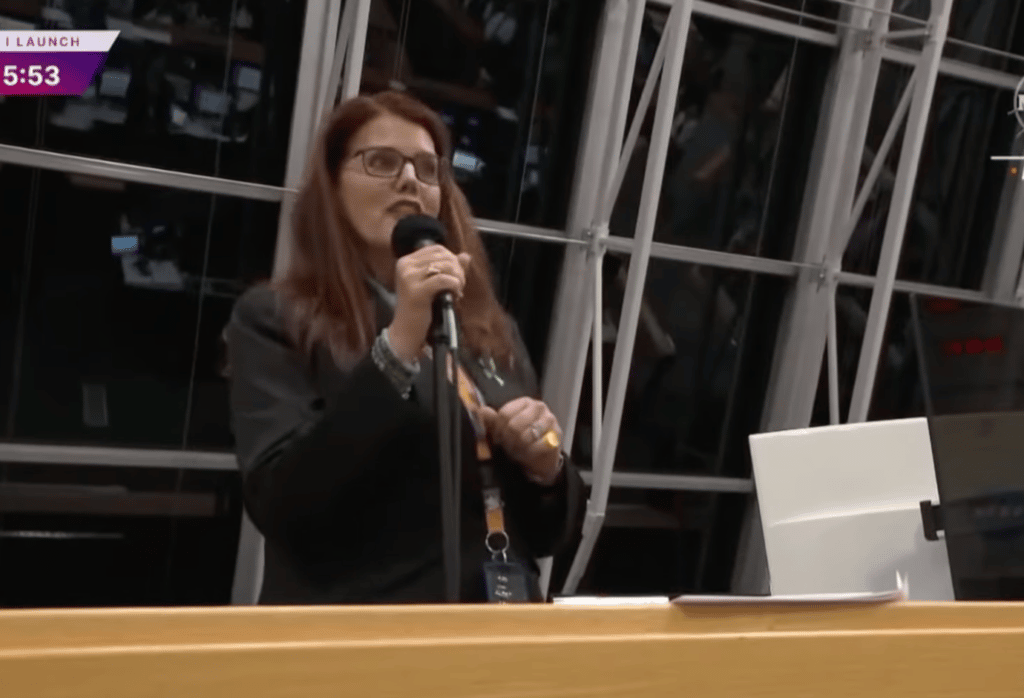NASA’s first female launch director launched her first-ever mission on Wednesday, with Charlie Blackwell-Thompson making history as she said “Go for launch” to a team working on Artemis I for its journey to the moon.
The former Chief of the Test Management Branch was appointed as NASA’s first female launch director in 2016. On Wednesday, as the Artemis I rocket soared through the sky, she dedicated the launch to “the Artemis Generation.”
“For once, I might be speechless,” Blackwell-Thompson said to her team in the control room after the launch. “…This is your moment.”
“It is not by chance that you are here today,” she continued. “You have earned your place in the room. You have earned this moment. You have earned your place in history.”
“It doesn’t come along very often – once in a career maybe, but we are all part of something incredibly special, the first launch of Artemis.”
“What have you done today will inspire generations to come. So, thank you for your resilience. The harder the climb, the better the view. We showed the Space Coast tonight what a beautiful view it is, so congratulations.”
Standing at almost one hundred metres in length, the Artemis I rocket took off from the Kennedy Space Center in Florida, and on launch day, 30 per cent of the engineers in the firing room were women.
The series of Artemis missions will mark the first time a woman and the first time a person of colour will step on the surface of the Moon.
According to NASA, Wednesday’s launch, which included the Orion spacecraft and the Space Launch System rocket, was the first in a series of “increasingly complex missions” to establish humanity on the moon.
In her role as launch director, Blackwell-Thompson managed all countdown preparations, training and procedures, such as strategising plans if the countdown is delayed and the launch rescheduled.
Shortly after the successful lift-off, Blackwell-Thompson had the end of her tie cut by former Space Shuttle launch director Mike Leinbach — a customary practice undertaken by launch directors, test directors and engineers after their first launch.
At a news conference earlier this year, she told reporters the mission is “pretty special” to her.
“Firsts don’t come along that often and to be at the beginning of a program that is going to take the first woman and the next man back to the Moon is pretty special,” she said.
She compared the Artemis missions to the Apollo missions in the 1960s and 70s, noting that during the Apollo 11 mission, there was only one woman among 450 men in the firing room .
“There is, without a doubt, a female presence as part of this — in both the leadership of this program and the operations areas, as well as the name of the program itself,” she said.
“So certainly the makeup of our workforce has changed over the course of the 50 years.”
Blackwell-Thompson has worked in spaceflight for over three decades. According to her NASA biography, she began at the space agency in 2004, working on space shuttle missions as a payload flight software engineer for Boeing before moving onto a role as lead electrical engineer on several Hubble Space Telescope repair missions.
Soon after graduating from Clemson University in South Carolina with a degree in computer engineering, she visited the Kennedy Space Center for a job interview, reflecting on the impact of the occasion on a NASA podcast last year.
“I wanted to be a part of that team,” she explained. “I wanted to earn myself a seat in the room, and I was lucky enough over time, to do that.”


